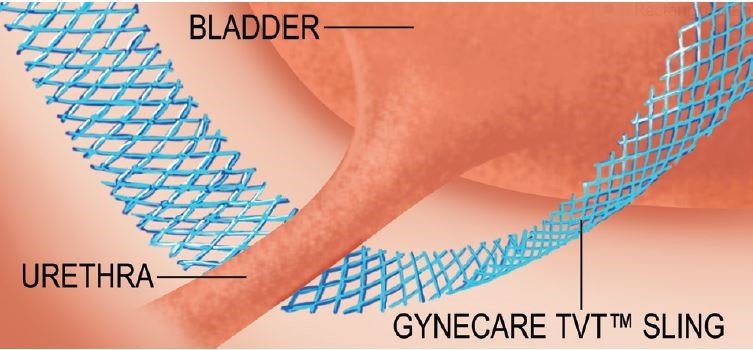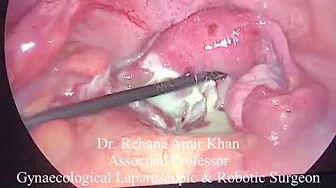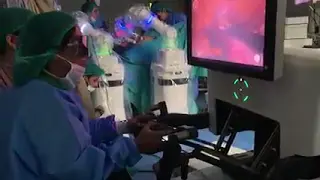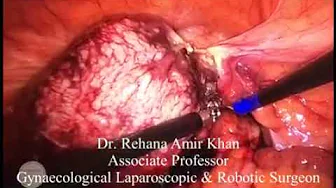TVT AND TOT & TVTO For Stress Urinary Incontinence
TVT, TOT, AND TVTO FOR STRESS URINARY INCONTINENCE
Consult the Best Gynecological Laparoscopic Surgeon in Lahore.

With years of experience in Gynecology, we are here to help
Our Specialist Gynecological Laparoscopic surgeons are specialized in all kinds of:
Do You Find It Difficult To Control Your Urine?
You May Have Stress Incontinence.
Call Us and Consult The Best Laparoscopic surgeon in Lahore Today
Urinary incontinence is the accidental loss of urine. Stress incontinence occurs when exercise or physical activity (such as coughing, laughing, sneezing, running, or lifting weights) puts pressure (pressure) on the bladder, causing urine to leak. Above all, stress incontinence is not connected with any psychological stress.
Additionally, stress incontinence is dissimilar from urge incontinence and overactive bladder (OAB). If you have urge incontinence, or OAB, your bladder muscles contract, causing you to suddenly have the urge to urinate before you go to the bathroom. However, stress incontinence is more prevalent in women than men.
Moreover, having stress incontinence may feel embarrassed, separate yourself, or restrain your work and social life. You can also avoid sports and recreational activities. With treatment, you may be able to manage stress incontinence and improve your overall health.
Symptoms of stress urinary incontinence
If you have stress incontinence, urine may leak when:
In some cases, one may not drip urine every time they do one of these things. However, any activity that puts pressure on the bladder increases the likelihood of involuntary urination, especially when the bladder is full.
TVT, TOT, AND TVTO FOR STRESS URINARY INCONTINENCE
When are you going to see a doctor?
Consult your healthcare provider if your symptoms bother you or interfere with daily activities, such as your work, hobbies, and social life.
Reason for stress urinary incontinence
Stress incontinence occurs when the muscles and other tissues that support the urethra (pelvic floor muscles) and the muscles that control urine output (urethral sphincter) weaken.
The bladder expands when it is full of urine. The flap-like muscles of the urethra, the short tubes that carry urine out of the body usually stay closed as the bladder expands, preventing urine from leaking until you reach the bathroom. But when these muscles weaken, anything that puts pressure on the abdominal and pelvic muscles such as sneezing, bending over, lifting, or laughing can put pressure on the bladder and cause urine to leak.
Pelvic floor muscles and urinary muscles may lose strength due to:
During childbirth.
In women, tissue or nerve damage during childbirth can weaken the pelvic floor muscles or sphincter. Stress incontinence from this injury may begin shortly after birth or develop years later.
Influencing factors
Other factors that may exacerbate stress incontinence include:
Risk factor
Some of the major aspects that raise the risk of stress incontinence are:
Age.
Physical changes that occur with age, such as muscle weakness, can make you more likely to develop stress incontinence. However, episodic stress incontinence can occur at any age.
Birth type.
Women who gave birth vaginally were more likely to experience urinary incontinence than women who had a cesarean section. Women who use forceps to deliver a healthy baby more quickly may have a higher risk of stress incontinence. Women who have undergone vacuum-assisted childbirth appear to be less likely to experience stress incontinence.
Weight.
People who are overweight or obese are at higher risk for stress incontinence. Being overweight increases stress on the abdominal and pelvic organs.
Previous pelvic surgery.
Hysterectomy in women can weaken the muscles that support the bladder and urethra, increasing the risk of stress incontinence.
TVT, TOT, AND TVTO FOR STRESS URINARY INCONTINENCE
Presentation of incontinence in patients
Presentation of stress incontinence may include:
Emotional distress:
If you experience stress incontinence during your daily activities, you may feel embarrassed and distressed about it. It can make a mess of your work, social activities, relationships, and even your sex life. Some people are embarrassed that they need bandages or clothing for incontinence.
Mixed urinary incontinence:
Mixed incontinence is common, which means you have stress incontinence and urge incontinence — unintentional incontinence caused by bladder muscle contractions (overactive bladder), resulting in an urgent need to urinate.
Rash or Irritation:
Skin in frequent contact with urine may become irritated and may break down. This can happen with severe incontinence if you don't take precautions, such as using a moisture barrier or incontinence pad.
TVT, TOT, AND TVTO FOR STRESS URINARY INCONTINENCE
Diagnosis
During your visit, your healthcare provider will look for clues that may indicate contributing factors. Your appointment may include:
Medical history
Bladder function test
Common causes of urinary incontinence usually do not require additional testing. However, in some cases, your provider may order tests to evaluate how well your bladder, urethra, and sphincter muscles are working (urodynamic testing).
Bladder function tests may include:
Residual urine measurement after voiding
Your provider may recommend this test if you are concerned about your ability to empty your bladder, especially if you are older, have had previous bladder surgery, or have diabetes. However, this test reveals how ably your bladder is functioning.
Ultrasound scan
Experts use an ultrasound scan, which converts sound waves into images, to see how much urine is left in the bladder after urination. In some cases, a thin tube (catheter) is passed through your urethra into your bladder. The catheter empties the remaining urine, which can then be measured.
Bladder pressure measurement
Cystometry is a test that measures the pressure in the bladder and surrounding area when the bladder is full. If you have a spinal neurological disorder, your provider may recommend this test to check for incontinence.
A catheter is used to slowly fill your bladder with warm fluid. When your bladder is full, you may be asked to cough or press to test for leaks. This process can be combined with a pressure-flow study, which shows how much pressure your bladder must exert to empty it.
Video urodynamics
Make a photo of the bladder. Video urodynamics is a test that uses imaging to create images of the bladder as it fills and empties. While the images are being recorded, a catheter is used to gradually infuse the bladder with warm fluid mixed with the dye that appears on the X-ray. When your bladder is full, imaging continues during urination to empty your bladder.
Cystoscopy
This test uses an endoscope inserted into the bladder to look for blockages or other abnormalities in the bladder and urethra. However, this operation can only be done under professional guidance.
You and your provider should discuss the results of any tests and decide how they might affect your treatment strategy.
TVT, TOT, AND TVTO FOR STRESS URINARY INCONTINENCE
Treatment
We as the expert gynecologist in Lahore, recommend a combination of strategies to treat incontinence. If an underlying cause or contributing factor is identified, such as a urinary tract infection, you will also receive treatment for the disease.
The Transobturator (TOT) sling procedure is currently the gold standard surgical treatment for female stress urinary incontinence. TOT is a simple, minimally invasive, and cost-effective procedure for the current surgical treatment of female stress urinary incontinence. When performed after proper training, TOT sling surgery has a 100% success rate (incontinence) and is only associated with minor postoperative complications that resolve within a few days.
TVT (tension-free vaginal tape) and TOT (tape) are procedures that elevate a woman's pendulous bladder or urethra into its normal position. During the procedure, a narrow strip of tape is placed under the urethra. The straps support the urethra and bladder like a hammock.

TVT, TOT, AND TVTO FOR STRESS URINARY INCONTINENCE
TVT or TOT & TVT-O
During surgery, the surgeon makes very small incisions (cuts) in the groin, lower abdomen, and vagina. A narrow strip of synthetic material (tape) is then passed through these incisions and placed around the urethra to elevate and support the urethra and bladder. The surgeon adjusts the tape during surgery to provide the appropriate amount of support.
The tension-free vaginal tape tampon (TVT-O) procedure for stress or mixed incontinence is safe and effective in the long run. However, things are getting better as everyone is more willing to talk about this dire condition than accept it as part of aging. In addition, there are better treatments available to help adults and children.
After surgery, the tape remains in place. The dots will slowly dissolve for a few days after the procedure.
Other treatments for stress urinary incontinence are:
Feel free to discuss any issue and treatment option with best gynecologist in lahore, please contact us any minute, and you will receive guaranteed results.
This process takes one to three hours. The timing may vary, depending on the size of the uterus and the number of previous pelvis surgeries, and whether another disease has to be removed, such as endometriotic cyst or if TVT, TOT, AND TVTO FOR STRESS URINARY INCONTINENCE is going to be performed for cancer of uterus or ovaries.
Some of the most common side effects of a hysterectomy are vaginal drainage (which can occur up to six weeks after surgery) and irritation at the incision site.
If you had your ovaries removed during a hysterectomy, you may experience menopausal symptoms such as:
Your doctor will discuss treatment options to avoid the menopause side effects described above.
The time you spend in the hospital after a hysterectomy depends on the type of surgery you had. Your healthcare provider will want to monitor you for signs of complications such as blood clots or bleeding. You will walk as soon as possible after surgery to prevent blood clots from forming in your legs.
If you had an abdominal hysterectomy, you may stay in the hospital for a few days. Vaginal and laparoscopic hysterectomies are less invasive and usually do not require an overnight stay.
Your healthcare provider will review your recovery instructions, including restrictions on your daily activities. Be sure to discuss any concerns you have about your rehabilitation or procedure.
Most people heal from a hysterectomy in roughly four to six weeks. Your recovery depends on the type of hysterectomy you had and how you had it. Recovery from vaginal and TVT, TOT, AND TVTO FOR STRESS URINARY INCONTINENCE is shorter than recovery from an abdominal hysterectomy.
You should gradually increase your activity and pay attention to how you feel. If something hurts you, stop. Discuss with your healthcare provider specific instructions for recovering at home, including which medications to take.
Complete recovery after TVT, TOT, AND TVTO FOR STRESS URINARY INCONTINENCE takes about two to four weeks when you will get rid of vaginal discharge and spotting and can contact your doctor for resuming sexual activity. Recovery from an abdominal hysterectomy can take up to six weeks. Talk to your healthcare provider before you go home to make sure you know the best way to take care of yourself.
It is normal to experience bloating or gas after a hysterectomy. It may take several weeks for abdominal puffiness and swelling to subside. Talk to your healthcare provider about ways to reduce discomfort. Some exercise, heat packs, or dietary changes may help.
It depends on whether the ovaries have been removed. If your ovaries are still there after a hysterectomy, you won't go into menopause right away. If both ovaries are removed during a hysterectomy, you may go into menopause right away.
Generally, no, especially if you are considered to be at low risk of cervical cancer. If you have had a hysterectomy for cancer, you should continue to have a Pap test.




